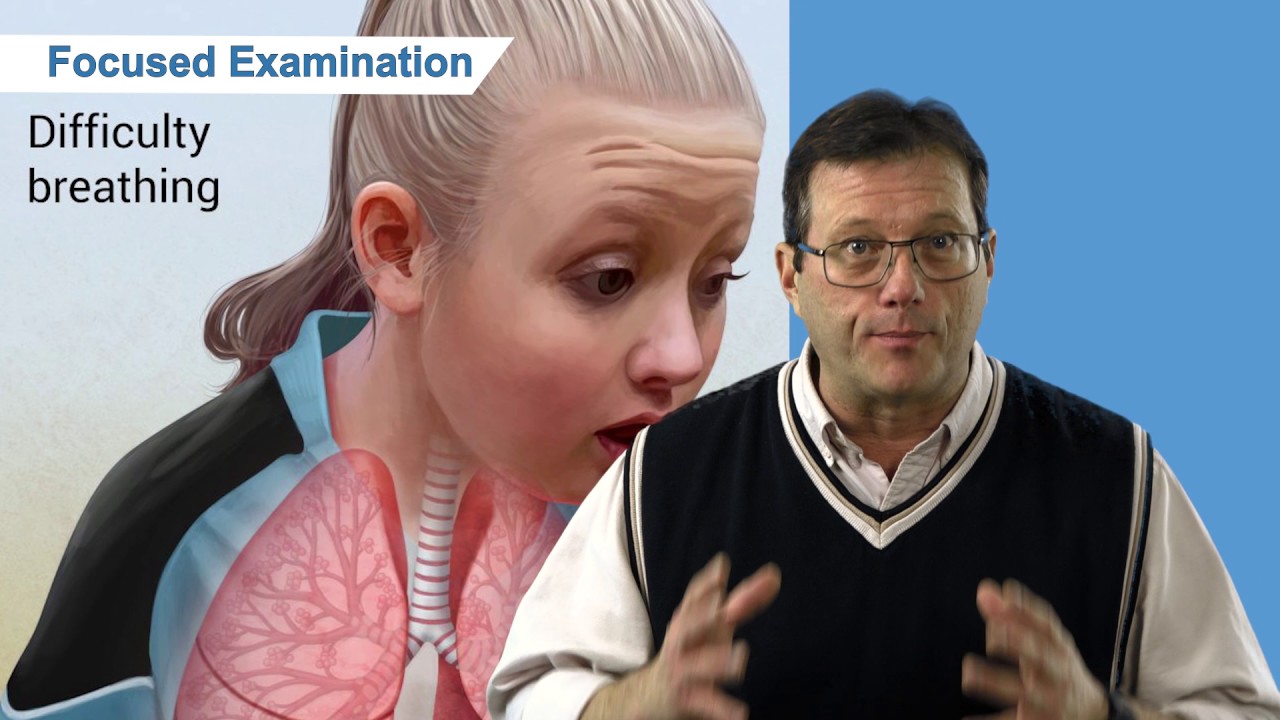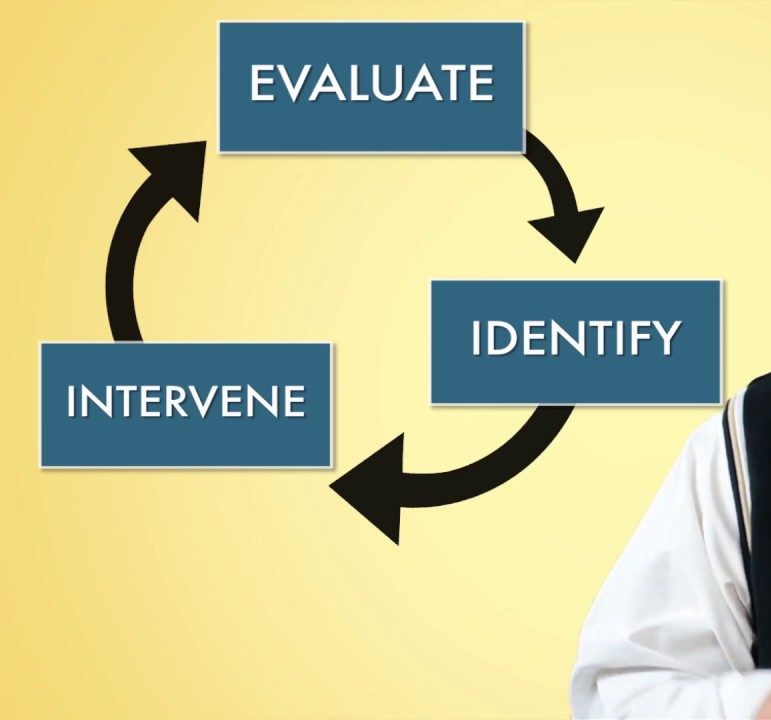Transcript:
Hi, everyone. We’re still in primary assessment. Now we’re looking at the letter D, disability. When we’re talking about disability, we’re talking about the child’s level of consciousness—are they in a state of altered mental status? That’s what we’re assessing for.
Initially, you’re going to use the AVPU scale to assess their initial level of responsiveness. AVPU: A – V – P – U. This stands for alert, verbal, pain, and unresponsive. This is how you’re assessing this child initially. First, alert. You walk into the room. The child sees you. They turn. They look at you. They’re alert. Fine. Let’s say you walk in and the child is being held by the mother and the eyes are closed. You walk up and you go, “Hey, child.” The child responds to your voice. They turn and they look at you. They’re responsive to your voice. Same scenario, Mom’s holding the child, eyes are closed, and you go, “Hey, child.” No response. Then you poke the child a little bit, you touch them, or maybe you pinch their arm, and then they respond. They did not respond when you walked in, they did not respond to your verbal stimuli, but they did respond to painful stimuli. It’s also important to note how did the child respond to this. Not only what level of stimuli did they respond to, but how did they respond. Did the child turn and go, “Hey, Mommy, that astronaut just pinched me,” or did they only respond with, say, moaning? That’s important. That’s going to be your baseline. You’re going to use that to judge how your treatment’s progressing—are they getting better? Finally, unresponsive. You walk in the room. The child doesn’t recognize you. They don’t respond to voice. You apply a little painful stimuli. You get nothing. This child is unresponsive. That’s using the AVPU scale to assess their initial level of consciousness.
We can do a better, more detailed assessment of their neurological function by employing the Glasgow coma scale, right? The Glasgow coma scale uses a numeric scale. It’s going to look at three items: One, their eyes—how is their eye movement? Two, their verbal response. Finally, their motor response—how are they moving? This is based on a numeric scale of 4, 5, and 6. I tend to remember, when talking about the Glasgow coma scale, “E, V, M, 4, 5, 6,” which stands for eyes, verbal, motor and the grading scale: eyes, best out of 4; verbal, best out of 5; and motor, best out of 6. The best Glasgow coma scale you can have—you, me, watching this right now, our Glasgow is probably 15. That’s the total of 4, 5, and 6. The best we can be is 15. The least we can be is 3. Sometimes you’ll hear—they might be wheeling a full-arrest in—them go, “The patient’s a triple zero.” They’re not talking about their Glasgow. They’re usually talking about their pulse, respirations, and blood pressure being zero—dead guy, right? Know that even a dead guy has a Glasgow coma scale of 3. That’s the minimum a Glasgow can ever be, is 3. Let’s take a look at the Glasgow coma scale. How do we grade this? When we’re looking at the eyes, if you look at the scale of 1 to 4, it’s the AVPU scale. When we’re doing the eyes, it’s either alert, verbal, pain, or unresponsive. Within the Glasgow coma scale, just looking at the E, the eyes, we’re just using the AVPU scale. Next, verbal response. This is a scale of 1 to 5 with 5 being best, 1 being the worst. I kind of think about verbal—I equate this to a drunk guy. If you think about it, right, a 5 is he has a drink in his hand, he’s fine, he’s talking, he’s alert, and everything’s fine. If he gets down to a 4, he starts getting confused. He has a drink and is going, “Where are my keys? Where did I put my wallet? Where’s my–.” He’s a little confused. Drop down to a 3. Now he’s slurring his speech a little bit, right? He’s going, “Hey, whatsa girl like me doin’ in a place like you.” His words aren’t coming out correctly. Get down to a 2, and now he’s developed pirate language. He’s drunk. He’s half passed out. He has undiscernible speech. That’s 2. A 1, he’s passed out, drunk, snoring. That’s a 1. When I’m looking at the verbal response, I tend to look at a drunk guy, the stages of being drunk. Now let’s take a look at the motor response for the Glasgow coma scale. It’s a 1 to 6 scale, 6 being the best. A 6 would be a patient who follows commands. You tell them to move their right leg, they move their right leg. Great. After that, moving down to a 5 would be localizes pain. What that means is the patient’s lying there on the cot, they may not be saying or doing anything, but you pinch them in the arm or start an IV, they withdraw that arm. They’ve localized that pain, they’ve responded to it, and they’ve moved that arm. Moving down to a 4 would be withdraws from pain entirely, which means you went to start an IV on that arm and the whole body moved. They just tried to get away from the pain. They just completely withdrew from it, but they didn’t localize to the arm. Now, 3, 2, and 1, moving down the motor section of the Glasgow coma scale, are always the same throughout the ages: decorticate posturing, decerebrate posturing, and unresponsive. Those are the last three sections of the motor response of the Glasgow coma scale.
The Glasgow coma scale was originally designed to assess the severity of traumatic brain injuries, head injuries. That’s what we used it for. Later on, it was adapted so we could assess medical patients—the neurological function of medical patients. Later after that, it was modified to include the pediatric patient. If you look at the Glasgow coma scale, the motor and verbal are dependent on the patient’s response to us. They have to be able to respond to us, and they have to be able to speak. A very small child or an infant won’t be able to communicate like this, so we had to modify the Glasgow coma scale in the verbal and the motor sections to accommodate infants. Looking at the verbal response in the Glasgow coma scale for an infant, starting at 5 would be a baby who’s cooing, acting like a normal baby. Moving down to a 4 would be a baby that’s crying, but they’re consolable. After that, moving down to a 3 would be a baby who’s persistently crying. They’re not consolable. They’re crying constantly to pain. A 2 would be an infant who’s just moaning to pain, moaning to a painful stimulus. That’s the only response we got out of them. Then a 1, of course, would be completely unresponsive. You can see it changed a little bit for an infant who can’t communicate. The motor response for an infant is 6, acting normally, just being a regular kid. They’re moving appropriately. Everything’s working fine. Moving down to a 5 would be withdraws to touch. You just touch them and they withdraw. A 4 would be withdraws to painful stimuli. You touched them and they were fine. As soon as you pinched them or gave them some pain stimuli, then they moved away from that. Then the last three, again, in the motor for the Glasgow coma scale, are always decorticate, decerebrate, and unresponsive.
How are we going to treat this in a kid when we have a depressed altered mental status? One, be thinking oxygenation. Go back to the airway on this kid. It always starts with the airway. Two, look at their perfusion. Do they have oxygen in the blood but they’re not circulating it? Three, we can look at their blood sugar. This is important in children, too, with any altered mental status. Children do not have the glycogen storage that adults have. They don’t have that reserve sugar that adults have. Children can drop their sugar just from the work of breathing. A sick kid who has pneumonia, has been working really, really hard to breathe, could chew up his sugars very quickly. I’ve seen this. The kid has been working, working, working, peters out, and passes out. He didn’t pass out from hypoxia. He passed out because he used up all his sugars. Any child or any adult with an altered mental status demands that we check their blood sugar.
Another assessment tool is looking at their pupils. The pupils should be equal in size and respond briskly when we apply light. Take out a pen light, put it in their eyes. Both pupils should constrict equally and briskly. We’re looking for unequal pupil size. Or, are they reacting slowly? They should be brisk. They should go from big to small briskly. If they’re slow to respond, we’re going to note that also.
This has been a quick review of the disability portion of the primary assessment, with a focus on the Glasgow coma scale. I’m Mark. Thanks for watching. I’ll see you in the next video.
Recommended Articles

PALS Primary Assessment – Exposure
In this short PALS review video, we will talk about our last segment in our primary assessment, which is exposure.




